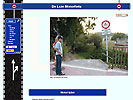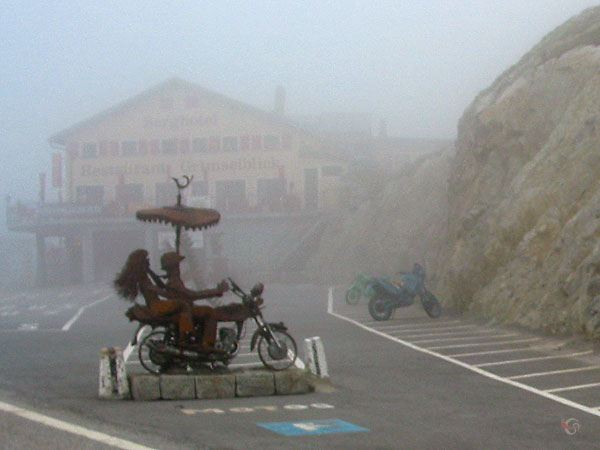
Many motorcycles allow you to take a pillion along. On this page, we wrote tips about riding with a pillion.
The pillion himself (or herself) too, can find tips about how to behave on the backseat of a motorcycle, in a way that riding is as pleasant as possible for both motorcycle rider and pillion.
![]() Er is een Nederlandse versie:
Er is een Nederlandse versie:
http://www.luiemotorfiets.nl/tips/achterop/
In front: shifting
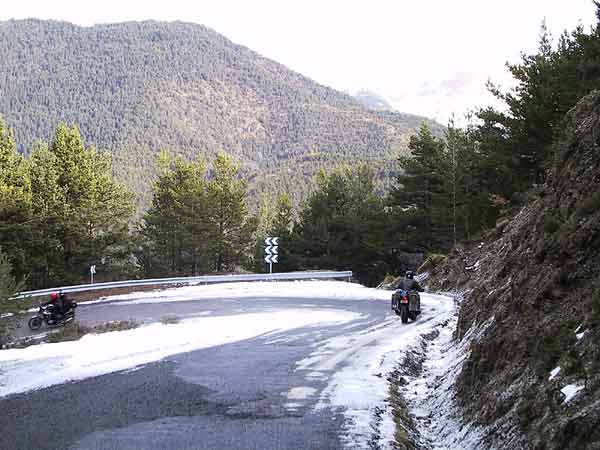
Cloinking Helmets
When you ride with a pillion, you will notice that sometimes, the pillion's helmet collides with your helmet with a "cloink".
You shouldn't blame the pillion rider for that: see it as a sign that your gear shifting should be a bit smoother.
One of the nice side-effects of riding with a pillion is that you can practice switching gears in a perfect way, because you get immediate feedback when you do'nt succeed.
Switching gears *fast*
The tric to switching gears without a sudden change of speed (that's why those helmets cloink against each other) is that you should switch gears as *fast* as possible. The sequence of actions is:
- Close the throttle a litle bit, and almost at the same time
- Pull the clutch (you don't have to pull it completely), and immediately
- Switch gears, and immediately
- Loosen the clutch and set the throttle in its original state.
Practice
It is better to practise changing gears smoothly without a pillion: a pillion enhances the braking effect of pulling the clutch.
And when you ride with a pillion, you can test how well you perform.
In front: throttle and brake
Braking
Braking hard does not feel very comfortable for the pillion. The pillion will be pushed against you very hard.
Therefore, you should try to brake as little as possible, and if you have to, start braking as soon as possible: then you can brake very lightly.
The throttle
Exactly the same is true for opening the throttle: when you accelerate hard, your pillion will feel as if he or she will fall from the rear of the motorcycle. The pillion should hold the motorcycle rider tightly, but even then, rapid acceleration in most cases will not be positive for the pleasure of the pillion.
Looking ahead
This boils down to the advice that you look far ahead, even more than you are used to do when riding on your own. When you do that, you are able to foresee that you will have to brake long before you need to. And you will have to enhance your speed a bit more gradually than you are used to.
Smooth
Especially when you have a pillion who never has been on the back of a motorcycle before, it is important to be as smooth as possible.
An often heard advice for riding in slippery conditions, is to ride as if you would ride with a pillion, but the same applies the other way around: ride as if the tarmac is slippery.
That means: take corners with one set speed, instead of braking first and accelerate out of the corner. Try to loose speed by using the engine instead of using the brakes. And accelerate very slowly.
You will notice that your pillion will not have problems with leaning into a curve when you round the corner smoothly. When you ride stop and go style, your pillion will almost certainly feel uncomfortable when leaning in.
Pillion: climb onto the bike
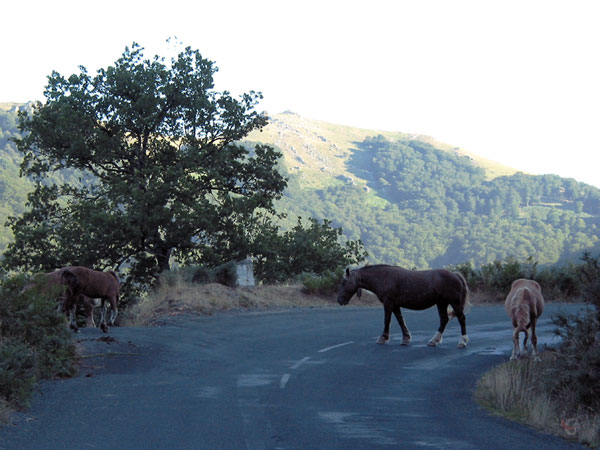
The footpeg is not a stirrup
Some spillion riders mount a motorcycle like they would mount a horse. As if the footpeg is a stirrup iron: they first put their left foot on the left peg, stand on that peg with their full weight, and then swing their right leg over the buddy, and come to a sit.
It is difficult for the rider in front to keep the motorcycle upright. Especially when the motorcycle is high, the legs of the motorcycle rider are short, or when the motorcycle is heavy, it is very difficult not to let the motorcycle fall to the left side.
Swing your leg
So you keep your left foot on the grond, swing your right leg over the motorcycle, and then shift upward until you sit on the buddy.
Impossible?
If mounting the motorcycle is impossible for you that way, for instance because the motorcycle and its luggage are too high for your right leg, make sure that the rider in front knows how you are planning to climb onto the bike. Then he or she is able to anticipate the extra weight on the left side.
Pillion: move along
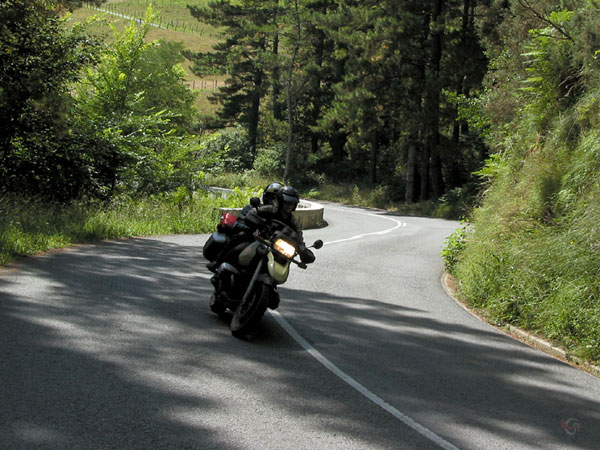
How to sit
The more to the back of the bike you sit, the more your weight will disturb the motorcycle in corners.
So it is better not to lean backwards, but to sit close to the rider in front.
How to fasten yourself
You can grab the coat of the rider in front, or, if available, the grab rails of the motorcycle.
The advantage of grabbing the coat of the rider, is that you almost automatically will move along.
Corners
When the motorcycle leans into a corner, you should move along with the rider in front. That is: you don't try to lean in the opposite way as the motorcycle! Instead, you go along with the bike.
When you lean *more* than the bike, the bike will steer more into the corner than the rider in front expects. So just move along with the rider.
When you look actively to the road in front (as if it's you who is the rider),
it is good practise to keep your head at the inside-side of the head of the rider in front,
in every corner. When you do that, you automatically lean with the motorcycle.
So, in a corner to the left you have your head to the left of the rider in front,
and in corners to the right at the right-side.
Riding slow
At slow speed, a motorcycle looses its balance easier. Your task is not to make sudden movements, for instance while lane splitting.
Pillion: stopping
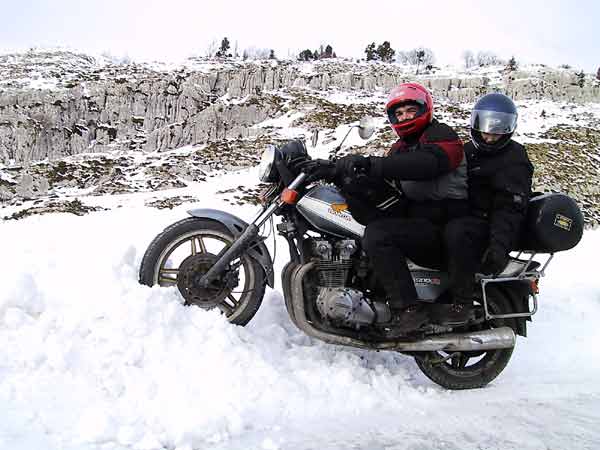
Feet on the pegs
When the rider stops, for a red light for instance, keep your feet on the pegs. It will be easier for the rider to keep the motorcycle in balance.
Getting off
When you get off the bike, wait until the rider says you may. Get off by sliding to the left, and place your left foot on the ground, and then swing your right leg over the buddyseat.
Pillion: clothing

Important
Realise that you are vulnerable on the back of a motorcycle, often even more than the motorcycle rider him- or herself. The difference is that your fate is in the hands of somebody else.
Good clothing offering extra safety, and especially a good, *fitting* helmet, is very important: it is'the only measure you are able to take yourself!
Comments, Q & A, on a separate page




